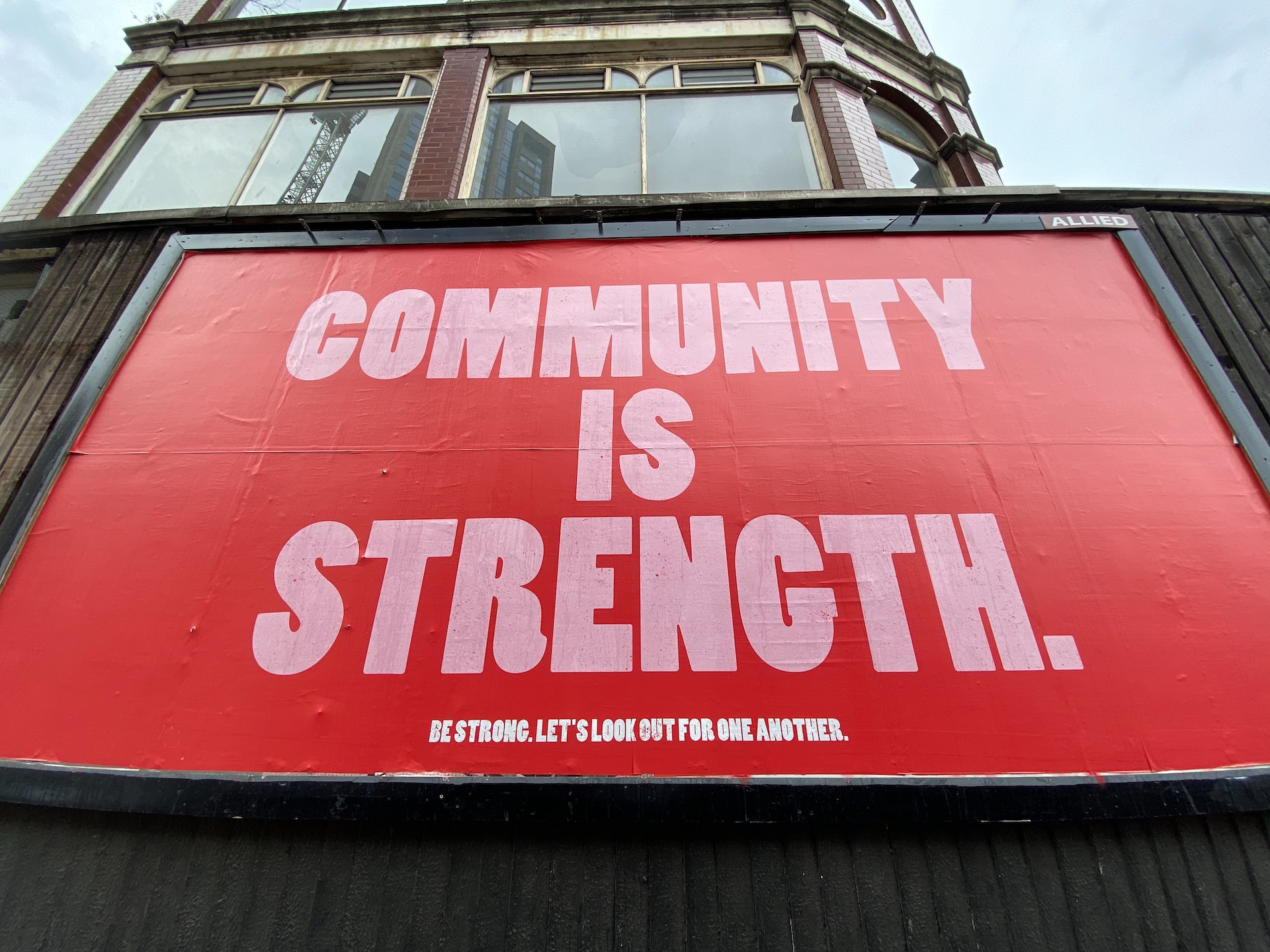Starting a Coworking Space: Stephen Wood’s 5 Top Tips
With the number of people searching for coworking at a record high, there’s – arguably – never been a better time to explore the prospect of opening a space.
Starting a coworking community can be incredibly rewarding. But like most things in life the process comes with its own unique challenges.
We caught up with Stephen Wood, Nexudus’ North America Account Lead to learn about new coworking space best practices.
Prior to joining Nexudus Stephen worked in boutique restaurants and hotels before setting up a successful coworking space in Shoreditch, East London.

1. Keep it simple
Stephen’s first top tip is simply…to keep it simple!
It can be tempting for new operators to inadvertently overcomplicate their offering by trying to appeal to everyone and providing every benefit under the sun.
“You can bundle all these things into an amazing package, but in reality it can cause more complexity. If you’re starting out, just keep it really simple,” explains Stephen.
Think carefully about the benefits you’re going to offer; can you afford them? Do you have the staffing capacity? Will your coworking management system support them?
“We said that we were going to open 24/7 because that’s what WeWork did. But it caused complications. For instance, our landlord wouldn’t allow the building to be unstaffed so we had to pay someone to be there overnight.
In reality, members rarely used the office at night but retracting the benefit caused some disruption too,” Stephen admits.
There’s no point offering certain benefits or setting rules if you can’t maintain them. You have to be able to manage them, otherwise they’re worthless.
2. Set up your CRM early
Stephen says new operators should seriously consider their software options well ahead of opening. “We’ve onboarded new operators who are opening their space in six months time but want to start using our CRM to build wait lists.”
That said, there are also benefits to the ‘pen and paper’ approach to lead management, admits Stephen. The coworking space Stephen ran was driven by the ‘human touch’; the decision was made not to invest in software straightaway.
Research is key.
“If you opt for software straightaway you might actually end up paying for more than you need, or you might buy multiple software solutions to remedy problems that you don’t actually have – or might never have – because you haven't opened the business yet.
“On the other hand, implementing software when you’re in the midst of running a space is hard to do. We implemented our software solution ten months into the business opening and that was really hard.”
3. Have a founding members strategy
Reaching out to key companies within the sectors you want to target can help you establish a solid members base. Like Stephen did when he set up his coworking space, you could offer these members a special founding desk rate.

In turn, your founding members are more likely to become your organic marketing partners, spreading the word to their suppliers and others in their industry. As well as promoting your space and generating leads, they could also help you choose new members if, for instance, you have a long waiting list.
Having a readily available ‘showroom office’ is another good idea, adds Stephen.
Even if the majority of your building is still being fitted out, providing interested parties with a dedicated hardhat tour and showing them what the finished product will look like can be very effective when it comes to creating a buzz.
Of course, tours can also act as a source of content for Instagram and TikTok.
4. Don’t underestimate community
“Don’t think the community aspect will come organically – you need to work at it. We thought that building a community was going to come quite organically as long as we attracted our target market. But it didn’t,” says Stephen.
“We also thought that if we designed a really nice space people would want to hang around after work and socialise. Then we realised that most people want to leave their work premises for a drink. Unless it’s free, of course!”
Building a successful coworking community requires careful planning and effort.

There are so many resources out there that can teach you how to build and sustain a community. Jamie Russo’s Everything Coworking resources are a great place to start, says Stephen. There’s a wealth of content on the website designed to help new and established operators, including the insightful Everything Coworking podcast.
5. Integrate your access control
It’s important to choose coworking software that can integrate seamlessly with your access control system. Nexudus, for instance, integrates with 10 access control systems, including Kisi, Salto KS and Brivo.
Connecting your access control to your main software hub will enable you to grant access permissions based on things like membership status. You’ll also be able to control who can gain access to meeting rooms, and when.
“With Nexudus you can even deactivate someone’s account if they go a certain amount of days without paying. That’s something I never had when I was running a coworking space but I would have loved.
“For instance, after 10 days of not paying you can instruct the system to automatically deactivate the members’ account. In doing so, they won’t be able to access the space or connect to WiFi. It really does make it an easier conversation for the team to have with members who haven't paid.
“Also, with WiFi integration, you can ensure that visitors don’t continue to use your space for free after their meeting. Once their meeting is over they won’t be able to access the WiFi. Of course, they can always purchase a day pass if they want to reconnect and continue working in your space!”
Related stories
Global Coworking Trends and Opportunities for 2025
Now well into 2025, the coworking industry continues to demonstrate strong momentum. With demand for coworking spaces remaining steady around the globe, it's clear that coworking is not just enduring—it's thriving. Let’s explore the major trends and opportunities shaping the global coworking landscape this year.
Creating Events that Drive Community Engagement in Coworking Spaces
Community is everything in coworking, but a genuine sense of connection between members doesn’t magically happen overnight or by chance. Often, meaningful relationships take intentionality, effort, and time to build, with events being an effective vehicle for bringing people together around shared interests, goals, and experiences, creating opportunities for collaboration, and a thriving coworking culture. This article looks at creating events that drive community engagement in coworking spaces.
Liz Elam: ‘Community is the number one amenity in coworking spaces’
A household name in the global coworking industry, Liz Elam, is the founder of one of the world’s best coworking event series: GCUC. Liz’s coworking roots began in 2010, when she established Link Coworking – a welcoming, affordable, and professional coworking space – in her hometown of Austin, Texas. Link Coworking achieved incredible success, expanding across three locations and becoming the fourth-largest coworking brand in Austin. It was sold in 2019, making Liz the first woman globally to exit a coworking brand.
Key Takeaways from the Coworking Alliance Summit 2025
Gathering online for the Coworking Alliance Summit last week, members of global coworking alliances, coworking spaces, and community leaders came together to navigate global issues, strengthen ties across the coworking industry, and work collectively towards future goals.
5 Ways to Reduce Noise in Open Offices & Coworking Spaces
Some people like working against a background of noise, while for others it’s their worst work nightmare. The truth is, our relationship with noise depends on our own preferences and the nature of our work.
Key takeaways from the Workspace Design Show 2025
London’s Workspace Design Show is undoubtedly one of the best coworking events of 2025. For one, the exhibition (held at Islington’s Business Design Centre) features a host of innovative and creative workspace design solutions tailored to the needs of modern workplaces.
What Is Workplace Management and Why Does It Matter?
There has always been a need for workplace management – the process of organising and optimising physical spaces, resources, and operations to support people’s needs. But, as 28% of UK working adults were reported to work in a hybrid capacity last autumn (by the Office for National Statistics), the question of ‘why workplace management matters’ is more critical than ever. Let’s look at the workplace management benefits for your operations.
10 Smart Goals for your Coworking Space: How to Set & Achieve Business Objectives
Coworking is synonymous with creativity, collaboration and productivity. Businesses and freelancers love coworking spaces because (by surrounding themselves with fellow workers) they’re more likely to achieve their goals. The coworking environment, while social, is set up to facilitate focused, distraction-free working.
The Best Coworking Events in 2025: Must-Attend Gatherings for Professionals
Managing coworking spaces is an all-encompassing role, often leaving operators, owners, and community managers with little time to focus on personal growth or draw inspiration from others.
10 Award-winning Coworking Space Designs: A Comprehensive Guide
Vibrant, contemporary workspaces create an undeniable ‘wow’ factor. Textured designs and ambient lighting make spaces feel warm and cosy, while natural elements and biophilic design features have literal mood-boosting properties.

